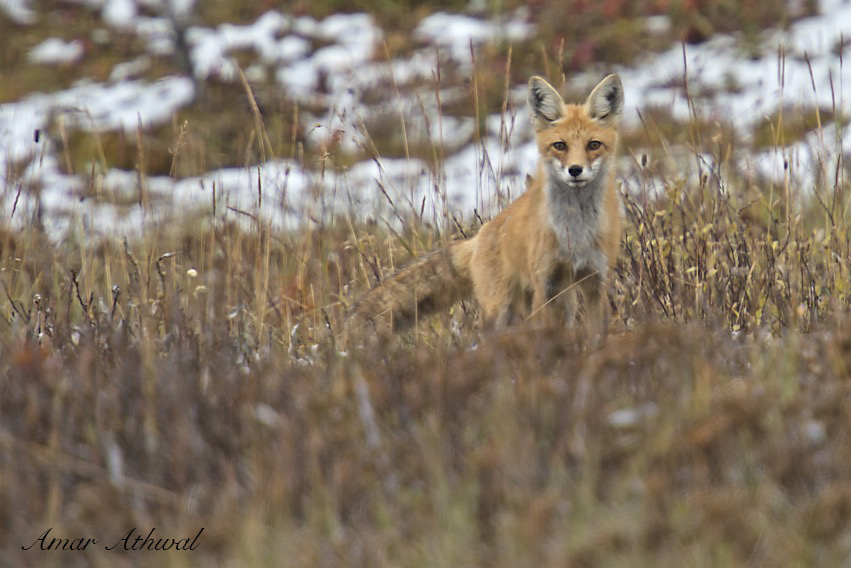Four species of foxes from the Canidae family can be found in Canada. The swift fox, the smallest of Canadian foxes, was historically found from southern Alberta to southwestern Manitoba but was thought to be extirpated from Canada by 1970. However, with help from captive populations and those obtained from Colorado, swift foxes were released in southeastern Alberta and southwestern Saskatchewan. Since then, there have been records of breeding in the wild. Swift foxes are listed as Threatened in Canada’s Species at Risk Act. The first record of one being found in Banff National Park was in 2012. It was assumed to have traveled some 400 kilometers to get there. Unfortunately, it was run over and killed on the Trans-Canada Highway.
Grey foxes, similar in size to red foxes but slimmer, have slightly rounded ears, a black back stripe, and speckled grey sides. Their undersides are off-white, and their neck, the backs of their ears, and their legs are yellowish. They are found in the very southern parts of Manitoba, Ontario, and Quebec. They are also listed as Threatened in Canada’s Species at Risk Act.
Arctic foxes are small with white fur in the winter and dark brownish fur during the summer. Like red foxes, they have a circumpolar distribution, meaning their range spans a wide range of longitudes around the North Pole. Both species are listed as Least Concern by the International Union for Conservation of Nature. However, due to climate change, red foxes are increasingly pushing north. Not only are they expanding their range into arctic fox territories, but they are also hunting them.
Red foxes are the largest species of fox in Canada, weighing between 2.5 and 6.5 kg. They have a wide range across North America, Europe, North Africa, and Asia, and they have also been introduced to Australia. One of the few species that has adapted well to human presence, the red fox thrives in areas of farmland, large cities, suburbs, and other urban ecosystems. This red fox mainly spends her time in the wild, but her range does include some human-populated areas. When she was spotted early in the morning, she was busy searching for voles.
















